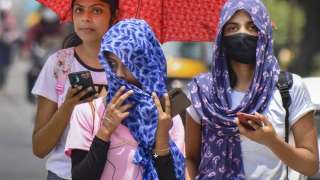Heatwaves are a common phenomenon in India during May-June. This year, summer began early due to the gradually increasing maximum temperatures in many parts of India. According to the Maharashtra health department, this year’s heatwaves have claimed 25 lives in the State. The number of heatwave days in India has increased from 413 over 1981-1990 to 600 over 2011-2020 (India Meteorological Department, Pune).
A sharp rise in the number of heatwaves has resulted due to the increasing impact of climate change. The number of people killed due to heatwaves has also increased from 5,457 over 1981-1990 to 11,555 over 2011-2020 (Accidental Deaths & Suicides in India). Since 1967, the report also confirms that 39,815 people have been killed due to heatwaves across India.
Based on the geo-climatic and socio-economic conditions, the highest number of people have been killed in Uttar Pradesh (6,745), followed by Andhra Pradesh (5,088), Bihar (3,364), Maharashtra (2,974), Punjab (2,720), Madhya Pradesh (2,607), West Bengal (2,570), Odisha (2,406), Gujarat (2,049), Rajasthan (1,951), Tamil Nadu (1,443), Haryana (1,116), Telangana (1,067), Delhi (996), Jharkhand (855), Karnataka (560), Assam (348), and 954 people were killed across the remaining 12 States.
Mortality due to heatwaves occurs because of rising temperature, lack of public awareness programmes, and inadequate long-term mitigation measures. According to the report of the Tata Centre for Development, the University of Chicago (2019), annually, more than 1.5 million people are likely to die due to extreme heat caused by climate change by 2100. The IMD Pune Atlas shows that 15 per cent of the population in 13 per cent of the districts is vulnerable to heatwaves.
Heatwaves have posed severe challenges to human health and have created public health emergencies. Furthermore, their frequent occurrence also adversely affects different sectors of the economy. For instance, the livelihood of poor and marginal farmers is negatively impacted due to the loss of working days. Heatwaves have an adverse impact on these workers’ productivity, impacting the economy.
Impact on workers
According to the International Labour Organization (2019) report, India lost around 4.3 per cent of working hours due to heat stress in 1995 and is expected to lose 5.8 per cent of working hours in 2030. The report also shows that 9.04 per cent of working hours are expected to be lost in each agriculture and construction sectors, respectively, due to heat stress in 2030.
Workers in these sectors will be severely impacted in 2030 because India’s large population depends on these sectors for their livelihoods. In absolute terms, India is likely to lose around 34 million full-time jobs in 2030 due to heat stress.
An urgent mitigation and adaptation plan is needed to tackle the adverse impact of heatwaves. Before 2015, no national-level heatwave action plan was available to fight against such calamities. At the regional-level, Ahmedabad Municipal Corporation (AMC) prepared the first Heat Action Plan in 2013, followed by the devastating heatwave-related deaths in 2010.
In 2016, NDMA issued comprehensive guidelines to prepare national level key strategies for mitigating the impact of heatwaves.
Although some preventive measures have been undertaken to mitigate and adapt to extreme weather-related shocks, such initiatives are insufficient to prevent human fatalities from heatwaves. Still, implementing preventive measures, mitigation, and preparedness actions remains difficult.
The substantial loss of human lives and a consequent impact on people’s livelihoods indicate that effective disaster adaptation strategies and more robust disaster management policies are required in heatwave zones to lessen the impact of heatwaves. As deaths due to heatwaves are preventable, the government must prioritise preparing a long-term action plan to safeguard human lives, livestock, and wildlife.
Death from heatwaves can be prevented by installing improved early warning systems that communicate heatwave threats, recommend different preventative measures, and constrain disaster impacts. Disseminating public awareness through print, electronic and social media, providing heat-proof shelter facilities during summer, easing access to public drinking water, and huge afforestation, particularly in urban and rural areas, would help mitigate heatwave fatalities.
Heatwave is India’s second most lethal disaster after the flood; the government should declare it a natural disaster to prevent further losses. It helps the state and district administration prepare a heatwave action plan at the regional level. This will help build resilience infrastructure, develop early warning infrastructure, and create public awareness.
In order to undertake necessary mitigation and prevention measures, it is crucial to prepare a database at the district level involving the age, gender, and occupation of people who have died due to heatwaves.
Effective implementation of the Sendai Framework for Disaster Risk Reduction 2015-30, which emphasises disaster risk reduction with the State playing a leading role and sharing responsibility with other stakeholders such as local governments and the NGO sector, is now the need of the hour.
Parida and Roy Chowdhury are Assistant Professors of Economics at FLAME University, Pune; Sahoo is a Lecturer of Economics at Vikram Deb (Autonomous) College, Jeypore, Odisha. Views expressed are personal


